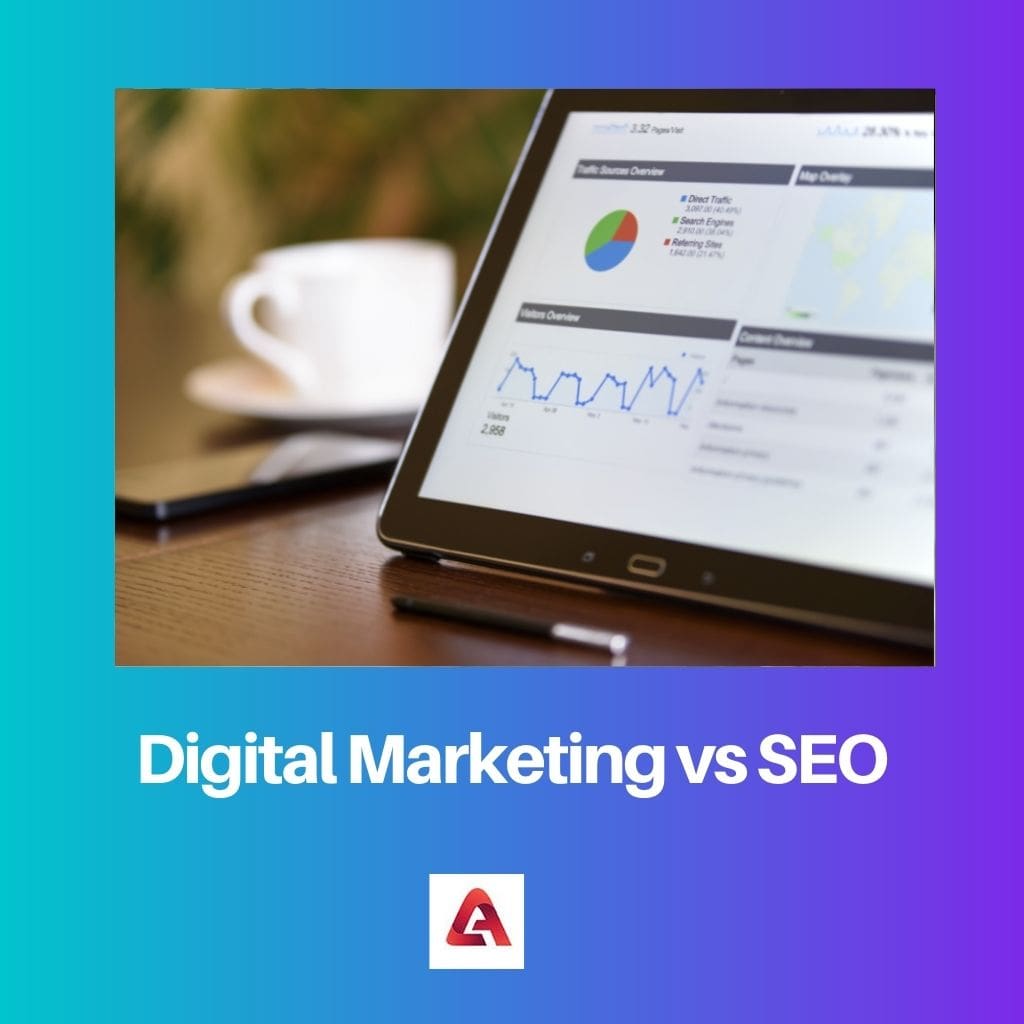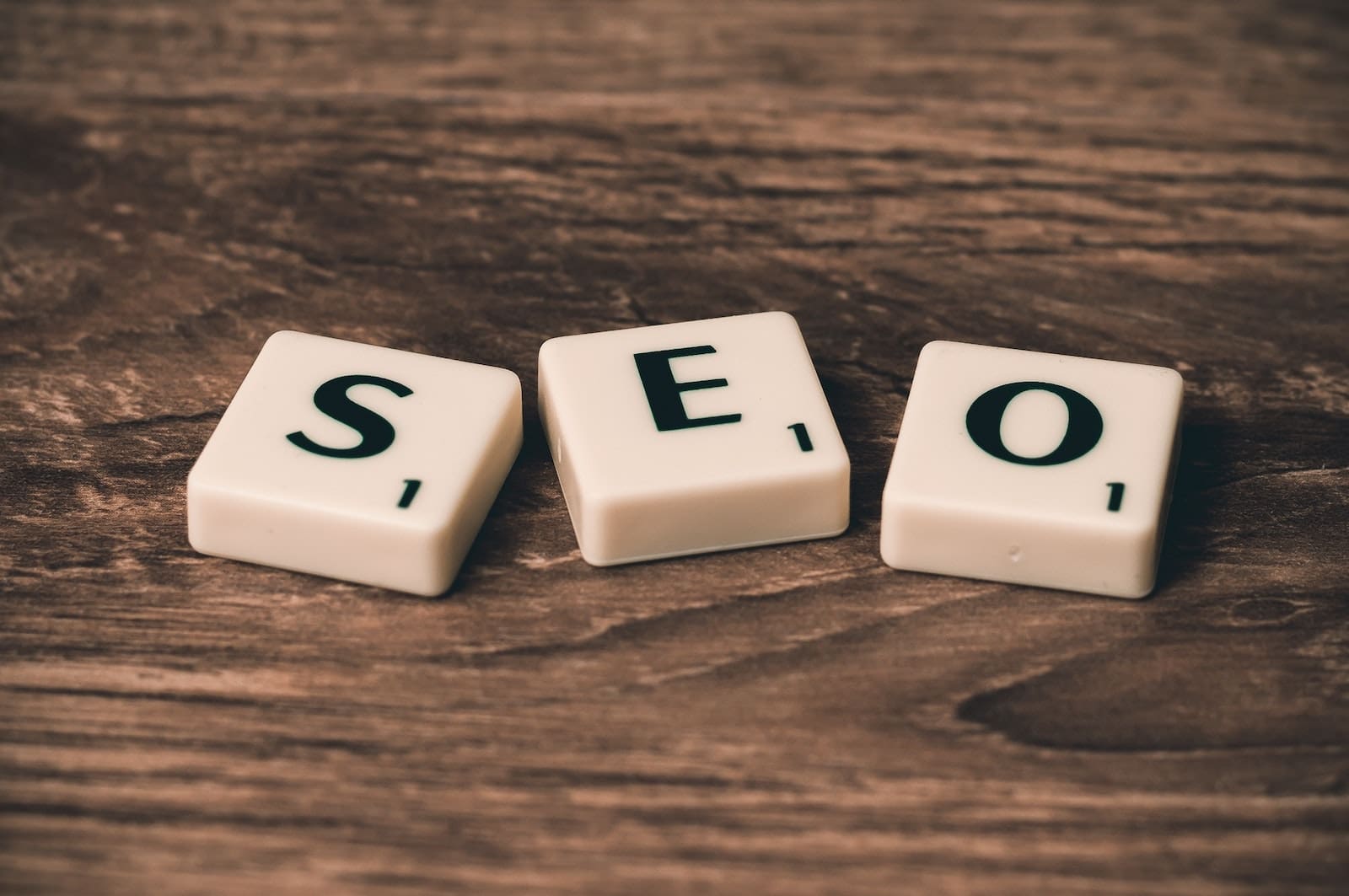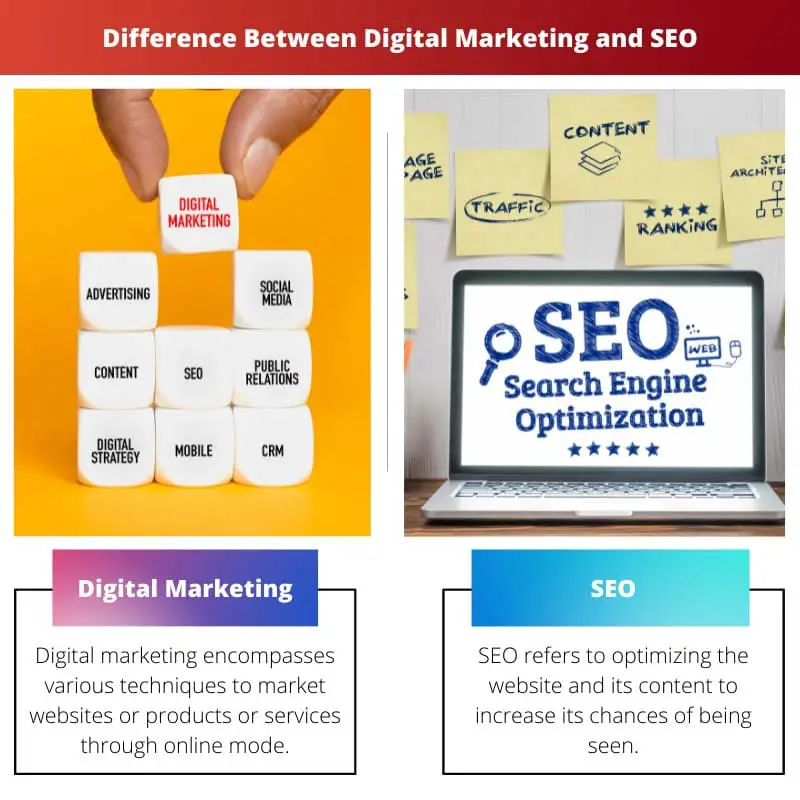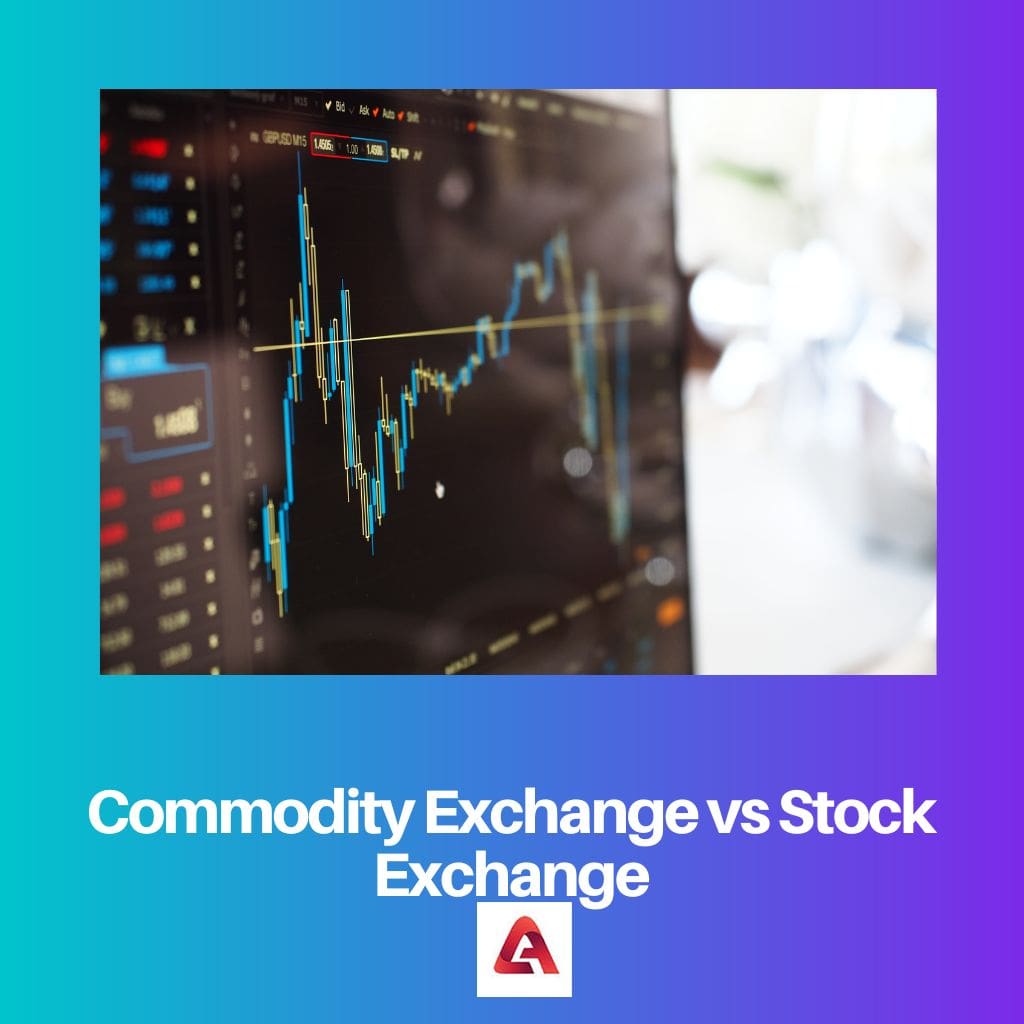Both digital marketing and SEO are considered to be processes through which the reach of a particular website and products and services can be increased. In other words, both of them are too used to be able to reach more customers for a website or product or service.
Key Takeaways
- Digital marketing is a broad term that encompasses all marketing activities conducted online. At the same time, SEO (Search Engine Optimization) is a specific technique to improve a website’s visibility and ranking in search engine results.
- Digital marketing includes strategies like social media, email, and content marketing, while SEO focuses on optimizing a website’s content and structure for search engines.
- Digital marketing and SEO are important components of online marketing but have different goals and techniques.
Digital Marketing vs SEO
The difference between Digital Marketing and SEO is that Digital Marketing refers to using videos, ads, posts, or social media to increase outreach. In contrast, SEO involves bringing up the website or page to rank higher upon searching.

Digital marketing is a vast term that encompasses a lot of activities. For instance, marketing through social media, YouTube videos, search engine optimization (SEO), and many other things.
SEO refers to Search Engine Optimisation and is a part of the broader term Digital Marketing. As a part of SEO, a website is optimized to rank higher when searched about related aspects.
This brings up the website’s position on the search engine and thus increases the chances of the website being referred to.
Comparison Table
| Feature | Digital Marketing | SEO |
|---|---|---|
| Definition | A broad umbrella of strategies used to promote a brand or product online | The practice of optimizing a website and its content to improve its ranking in search engine results pages (SERPs) |
| Goals | Increase brand awareness, generate leads, drive traffic, and ultimately convert visitors into customers | Improve organic search visibility and attract qualified traffic to a website |
| Scope | Encompasses all online marketing channels and tactics, including SEO, social media marketing, content marketing, email marketing, paid advertising, and more | Focuses specifically on optimizing a website for search engines |
| Cost | Can range from free (e.g., organic social media) to very expensive (e.g., large-scale paid advertising campaigns) | Can be free for basic on-page optimization, but requires ongoing investment in content creation, technical SEO expertise, and tools |
| Results | Can be seen quickly for paid advertising campaigns, but organic results take longer to achieve | Can take months to see significant results, but provides long-term benefits with sustainable organic traffic |
| Examples | Running social media ads, creating blog posts, sending email newsletters, influencer marketing | Keyword research, on-page optimization, link building, technical SEO audits |
What is Digital Marketing?
Components of Digital Marketing:
- Search Engine Optimization (SEO):
- SEO involves optimizing a website’s content, structure, and other factors to rank higher in search engine results pages (SERPs). This is achieved through techniques such as keyword research, on-page optimization, link building, and technical optimization.
- Social Media Marketing (SMM):
- SMM involves leveraging social media platforms such as Facebook, Instagram, Twitter, and LinkedIn to connect with audiences, build brand awareness, and drive engagement. It includes activities such as creating and sharing content, running ads, and engaging with followers.
- Content Marketing:
- Content marketing focuses on creating and distributing valuable, relevant, and consistent content to attract and retain a target audience. This content can take various forms, including blog posts, articles, videos, infographics, ebooks, and more.
- Email Marketing:
- Email marketing involves sending targeted emails to prospects or customers to nurture relationships, promote products or services, and drive conversions. It encompasses activities such as building email lists, creating personalized email campaigns, and analyzing email performance.
- Pay-Per-Click Advertising (PPC):
- PPC advertising involves placing ads on search engines or other digital platforms and paying a fee each time the ad is clicked. This allows advertisers to bid for ad placement in search engine results or display ads on websites and social media platforms.
- Affiliate Marketing:
- Affiliate marketing involves partnering with other businesses or individuals (affiliates) who promote your products or services in exchange for a commission for each sale or referral they generate. It’s a performance-based marketing strategy commonly used in e-commerce.
- Influencer Marketing:
- Influencer marketing involves collaborating with influencers, individuals with a large and engaged following on social media, to promote products or services to their audience. This strategy leverages the influencer’s credibility and reach to increase brand awareness and drive sales.
- Analytics and Data Analysis:
- Analytics and data analysis play a crucial role in digital marketing by providing insights into audience behavior, campaign performance, and ROI. Marketers use tools such as Google Analytics, social media analytics platforms, and CRM systems to track and measure key metrics and optimize their marketing efforts.

What is SEO?
Components of SEO:
- On-Page Optimization:
- On-page optimization involves optimizing individual web pages to rank higher and earn more relevant traffic in search engines. This includes optimizing page titles, meta descriptions, headings, URL structures, and content to make them more relevant to targeted keywords and search queries.
- Keyword Research:
- Keyword research is the process of identifying the specific words and phrases that users are searching for in search engines. By conducting keyword research, SEO professionals can understand user intent, identify relevant topics, and optimize website content to align with these search queries.
- Content Optimization:
- Content optimization involves creating high-quality, relevant, and engaging content that satisfies user intent and provides value to visitors. This includes optimizing content for target keywords, creating compelling titles and meta descriptions, using proper formatting and structure, and incorporating multimedia elements like images and videos.
- Technical SEO:
- Technical SEO focuses on optimizing the technical aspects of a website to improve its crawling, indexing, and overall performance in search engines. This includes optimizing website speed and performance, fixing crawl errors, implementing proper site structure and navigation, optimizing for mobile-friendliness, and ensuring secure HTTPS protocol.
- Off-Page Optimization:
- Off-page optimization refers to activities conducted outside of a website to improve its visibility and authority in search engines. This includes building high-quality backlinks from authoritative websites, engaging in social media marketing, participating in online communities and forums, and managing online reputation and brand mentions.
- Link Building:
- Link building is the process of acquiring high-quality backlinks from other websites to improve a website’s authority and credibility in the eyes of search engines. This involves outreach to relevant websites, creating valuable content that attracts links naturally, and ensuring proper anchor text optimization.
- Local SEO (for Local Businesses):
- Local SEO is the process of optimizing a website and its online presence to improve its visibility in local search results. This includes optimizing Google My Business listings, creating local citations, obtaining positive reviews from customers, and optimizing website content for local keywords and geographical modifiers.
- Monitoring and Analysis:
- Monitoring and analysis involve tracking the performance of SEO efforts using tools like Google Analytics, Google Search Console, and other SEO analytics platforms. This includes monitoring keyword rankings, organic traffic, backlink profile, and other key performance indicators (KPIs) to measure the effectiveness of SEO strategies and make data-driven decisions for optimization.

Main Differences Between Digital Marketing and SEO
Though the terms are closely related, the significant differences are discussed below.
- Scope:
- Digital marketing encompasses a broad range of online marketing strategies and channels beyond search engines, including social media marketing, content marketing, email marketing, PPC advertising, affiliate marketing, and more.
- SEO specifically focuses on optimizing a website and its content to improve its visibility and ranking in organic search engine results pages (SERPs).
- Objectives:
- Digital marketing aims to promote products or services, connect with customers, build brand awareness, drive engagement, generate leads, and increase sales or conversions across various digital platforms and channels.
- SEO primarily aims to increase the quantity and quality of organic (non-paid) website traffic by improving website visibility and ranking in search engine results, ultimately driving more targeted traffic and potential customers.
- Approach:
- Digital marketing employs a multi-channel approach, utilizing various online tactics and strategies tailored to specific goals and target audiences, integrating different channels for a cohesive marketing strategy.
- SEO employs a combination of on-page optimization, off-page optimization, technical optimization, keyword research, content optimization, and link building techniques to improve website visibility and ranking in search engine results specifically.





